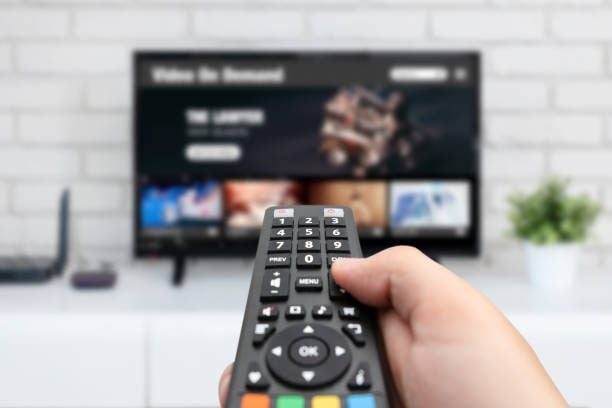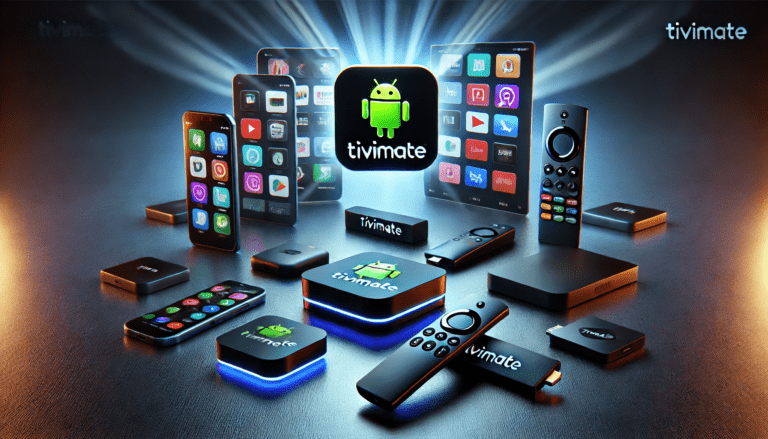
Why IPTV Is the Future in 2024
In recent years, the world of television has undergone a massive transformation. The rise of streaming platforms and the advent of IPTV (Internet Protocol Television) have brought significant changes to the way we consume entertainment. Gone are the days when traditional cable TV ruled the living rooms. In 2024, IPTV is poised to take over as the preferred choice for TV viewers around the globe. In this article, we will explore the differences between IPTV and traditional cable TV and explain why IPTV is the future of television in 2024.
What is IPTV?
Before diving into the comparison between IPTV and traditional cable TV, let’s first define what IPTV is. IPTV stands for Internet Protocol Television, which means that television content is delivered via the internet rather than through traditional broadcast methods like cable or satellite.
IPTV works by sending TV signals over a broadband internet connection rather than through cable wires. This allows users to access live TV, video on demand (VOD), and even catch-up TV on various devices like smart TVs, smartphones, tablets, and computers. IPTV services often come with a variety of features such as on-demand content, pausing and rewinding live TV, and access to a vast library of media.
Key Features of IPTV:
- Live TV Streaming: Viewers can watch live TV channels just like traditional TV but over the internet.
- Video on Demand (VOD): Allows users to watch specific content like movies, shows, and documentaries whenever they choose.
- Time-Shifted Media: IPTV enables viewers to pause, rewind, and fast forward live TV, offering more control over their viewing experience.
- Multi-Device Support: IPTV can be accessed on a wide range of devices, including smart TVs, smartphones, tablets, and PCs.
- Interactive Features: Many IPTV services offer interactive features such as voting in live shows, participating in quizzes, or accessing additional information about the show you’re watching.
Now, let’s explore traditional cable TV in comparison to IPTV.
What is Traditional Cable TV?
Traditional cable TV has been around for decades and uses a network of cables (usually coaxial cables) to transmit television signals from a central hub to individual households. Users receive a set number of channels that are broadcast at specific times. While cable TV offers some additional features like pay-per-view and limited on-demand content, it lacks the flexibility and personalization that IPTV provides.
Cable TV is generally delivered through two primary methods:
- Analog Cable: An older technology that transmits standard-definition video and audio signals via coaxial cables.
- Digital Cable: A more advanced version of cable TV that transmits digital signals, allowing for higher resolution and the addition of interactive features like electronic program guides (EPGs).
Key Features of Traditional Cable TV:
- Linear TV: Channels are broadcast at specific times, and viewers must watch content when it airs.
- Limited On-Demand Content: While some cable providers offer on-demand content, the selection is often limited and may not be available across all channels.
- Hardware Requirements: Viewers need a set-top box or cable receiver to access channels.
- Regional Availability: Cable TV services are often restricted to specific geographic areas, depending on the provider’s network coverage.
IPTV vs. Traditional Cable TV: The Main Differences
1. Content Delivery Method
The primary difference between IPTV and traditional cable TV is how the content is delivered. Cable TV relies on a physical infrastructure of cables to transmit signals, whereas IPTV delivers content through an internet connection.
- Cable TV: Uses coaxial or fiber-optic cables to deliver TV signals.
- IPTV: Uses the internet to stream TV content.
The benefit of IPTV’s internet-based delivery is that it is more flexible and not tied to a specific location. As long as you have an internet connection, you can access IPTV services from anywhere in the world. Traditional cable TV, on the other hand, is limited to areas where cable infrastructure exists.
2. Content Availability and Flexibility
Traditional cable TV offers a fixed set of channels, and viewers have to watch shows at the time they are broadcast unless they record them on a DVR (Digital Video Recorder). IPTV, however, offers much greater flexibility in how and when you consume content.
- IPTV: Offers live TV, video on demand, and time-shifted media, allowing viewers to watch what they want, when they want, on any device.
- Cable TV: Provides a fixed schedule of programming, limiting viewer flexibility unless they use DVR features.
IPTV also provides access to a much wider range of content, including international channels, niche programming, and exclusive on-demand libraries. Cable TV is typically more limited in its offerings, and you may have to pay extra for premium channels or additional features.
3. Personalization and Interactive Features
One of the standout features of IPTV is its ability to personalize the viewing experience. Because IPTV is internet-based, service providers can collect data on user preferences and viewing habits to offer personalized recommendations and tailor the content to individual tastes.
- IPTV: Allows for personalized recommendations, interactive features (such as voting or accessing additional content), and customized channel packages.
- Cable TV: Offers little to no personalization, with viewers receiving a standard set of channels based on their subscription package.
IPTV also allows for interactive experiences, such as participating in polls or quizzes during live shows, while cable TV is typically a one-way experience.
4. Device Compatibility
Traditional cable TV requires specific hardware, such as a set-top box, to function. This limits the devices on which you can watch content to just your TV. IPTV, on the other hand, can be accessed on a wide variety of devices, including smartphones, tablets, smart TVs, and PCs.
- IPTV: Supports multiple devices, allowing you to watch content on any device with an internet connection.
- Cable TV: Requires a set-top box or cable receiver, limiting viewing to TVs connected to the cable network.
This multi-device compatibility is especially appealing to younger audiences who prefer to watch content on the go, whether on their phone during a commute or on their tablet in bed.
5. Cost Efficiency
Cable TV packages are typically more expensive than IPTV services. Cable providers often bundle channels into large packages, meaning that you may end up paying for many channels you never watch. IPTV services, however, tend to offer more flexible pricing models, allowing users to choose smaller, more personalized channel packages.
- IPTV: Generally more affordable with flexible pricing plans and the ability to choose only the content you want.
- Cable TV: Often more expensive due to bundled channel packages and additional fees for premium services.
Additionally, cable TV often includes hidden costs such as equipment rental fees for set-top boxes and additional fees for HD or premium channels. IPTV services, being delivered over the internet, often eliminate these extra charges.
6. Geographic Availability
Cable TV services are typically limited to specific regions, as they rely on a physical network of cables. IPTV, on the other hand, is not bound by geographic limitations. As long as you have access to a reliable internet connection, you can use IPTV from virtually anywhere in the world.
- Cable TV: Limited to areas where the provider has physical infrastructure in place.
- IPTV: Accessible from any location with an internet connection, making it ideal for international viewers or expats.
This global availability is one of the reasons IPTV is gaining popularity, especially among those who travel frequently or live outside the coverage area of traditional cable TV providers.
7. Internet Dependency
One of the key differences between IPTV and traditional cable TV is that IPTV relies entirely on an internet connection. This can be both a benefit and a drawback.
- IPTV: Requires a stable, high-speed internet connection for optimal performance. Slow or unreliable internet can lead to buffering and reduced video quality.
- Cable TV: Does not rely on the internet and is less susceptible to performance issues caused by network slowdowns or outages.
While IPTV offers greater flexibility, viewers need to ensure they have a strong and reliable internet connection to enjoy uninterrupted viewing.
8. Picture Quality
Both IPTV and cable TV can deliver high-definition (HD) and ultra-high-definition (UHD or 4K) content. However, IPTV has the advantage of being able to offer superior picture quality if you have a fast internet connection. IPTV providers can deliver 4K streaming with HDR (High Dynamic Range) and Dolby Atmos sound, creating a more immersive experience for the viewer.
- IPTV: Can offer 4K UHD streaming with advanced features like HDR, depending on the user’s internet connection speed.
- Cable TV: Offers HD and sometimes UHD content, but availability and quality depend on the provider.
9. On-Demand Content
One of the biggest advantages of IPTV is its extensive on-demand content library. With IPTV, viewers can watch movies, shows, and documentaries whenever they want. Many IPTV providers also offer exclusive content not available on traditional TV.
- IPTV: Offers extensive on-demand content, allowing users to watch their favorite shows and movies at their convenience.
- Cable TV: Offers limited on-demand content, with fewer choices and less flexibility.
IPTV services are similar to popular streaming platforms like Netflix or Hulu in that they offer an abundance of on-demand content, giving viewers complete control over what they watch and when.
10. Future-Proof Technology
IPTV is built on internet protocols, which means that it is more future-proof than traditional cable TV. As internet speeds increase and technology advances, IPTV will continue to improve in terms of content delivery, picture quality, and overall user experience.
- IPTV: Built on internet infrastructure, making it adaptable to future technological advancements such as 5G and faster broadband connections.
- Cable TV: Relies on older technology, with limited room for improvement or innovation.
The scalability of IPTV, along with its ability to integrate with smart home devices, AI-powered recommendations, and even virtual reality (VR), makes it the ideal choice for the future of television.
Why IPTV is the Future in 2024
As we look ahead to 2024, it’s clear that IPTV is poised to take over as the dominant platform for television consumption. Here are a few reasons why IPTV is the future of TV:
1. Customization and Personalization
One of the main reasons IPTV is gaining popularity is the level of customization it offers. Unlike cable TV, which provides a one-size-fits-all package, IPTV allows users to choose their channels, services, and content based on their preferences. This means you only pay for what you watch.
In addition, IPTV platforms often use artificial intelligence (AI) to analyze viewing habits and make personalized recommendations, ensuring that users are always discovering new content that suits their tastes.
2. Global Accessibility
IPTV services are available worldwide, making them accessible to anyone with an internet connection. This is particularly beneficial for expats or international viewers who want to access content from their home country. Traditional cable TV, on the other hand, is often restricted by geographic boundaries.
3. Better Value for Money
With IPTV, you can enjoy more flexible pricing plans and a wider range of content at a lower cost than traditional cable TV. You don’t need to pay for channels you don’t watch, and you can take advantage of exclusive content available only through IPTV providers.
4. Integration with Smart Home Devices
As smart home technology continues to grow, IPTV is positioned to integrate seamlessly with devices like smart TVs, voice assistants (Amazon Alexa, Google Assistant), and home automation systems. This integration allows for a more streamlined and connected entertainment experience.
5. Advanced Features
IPTV platforms offer a host of advanced features, such as multi-device streaming, time-shifted viewing, and interactive content, all of which provide a superior user experience compared to traditional cable TV.
Conclusion
In 2024, IPTV is not just an alternative to traditional cable TV—it is the future of television. With its flexibility, personalization, cost-effectiveness, and ability to adapt to future technologies, IPTV provides a superior viewing experience that meets the demands of modern consumers. Whether you’re looking for live TV, on-demand content, or access to international channels, IPTV offers a more comprehensive and accessible solution than traditional cable TV ever could.
As more viewers make the switch to IPTV, it’s clear that the days of traditional cable TV are numbered. The future of TV is online, and IPTV is leading the way.




